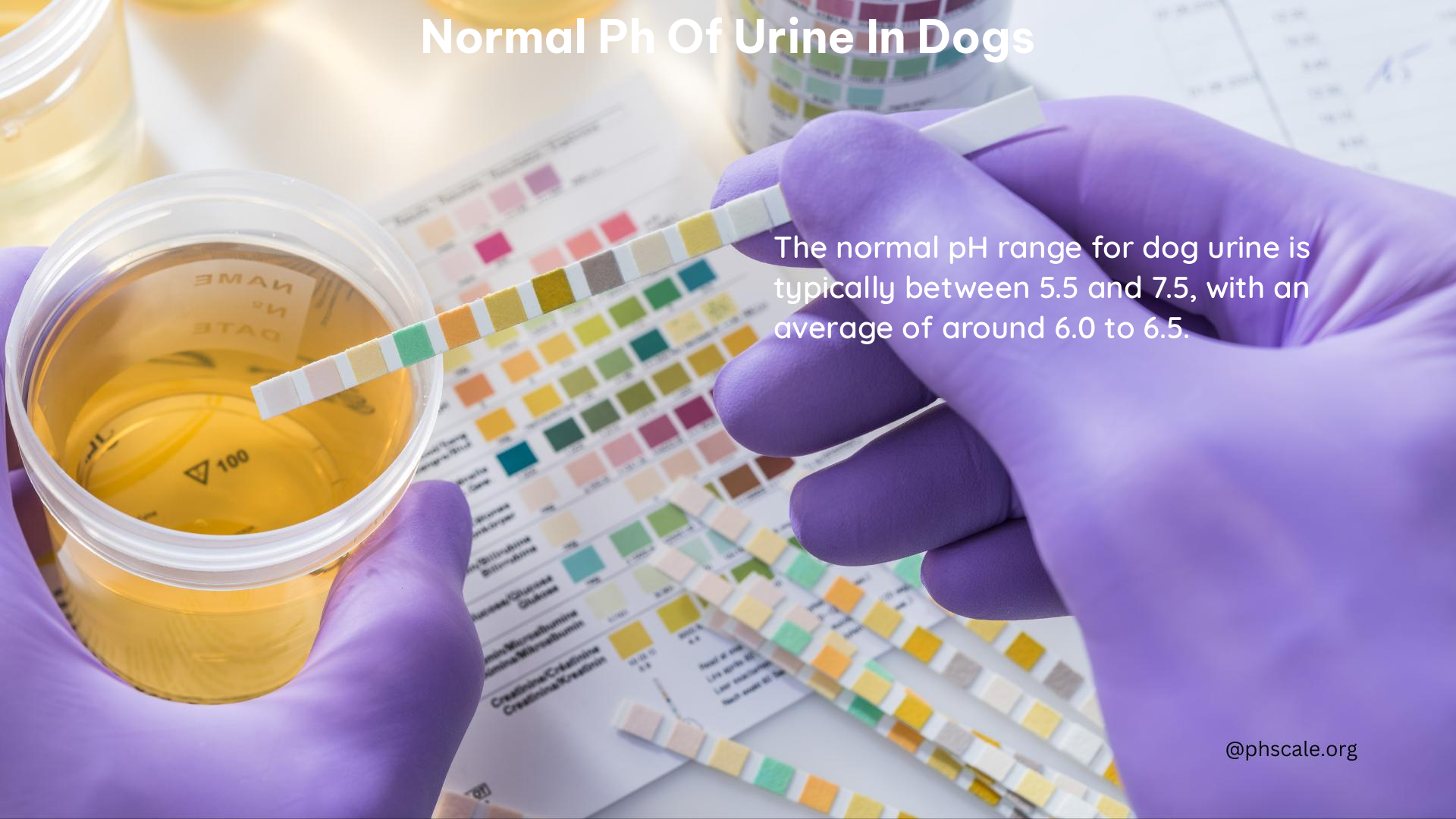The normal pH range for a dog’s urine is between 6.5 and 7.0, indicating a slightly acidic to neutral pH level. This range is essential for maintaining healthy urinary function and preventing the formation of crystals or stones. Factors such as diet, metabolic conditions, and medications can influence a dog’s urine pH, and understanding these factors is crucial for ensuring your canine companion’s overall well-being.
Factors Affecting Urine pH
Diet
A dog’s diet can significantly impact the pH of their urine. A high-protein or milk-based diet can lead to acidic urine, while a diet rich in vegetables and cereals can result in alkaline urine.
Metabolic Conditions
Certain metabolic conditions, such as metabolic acidosis, diabetic ketoacidosis, and lactic acidosis, can cause acidic urine. Conversely, metabolic alkalosis can lead to alkaline urine.
Urinary Tract Infections
Infections with urease-producing bacteria can increase the pH of a dog’s urine.
Medications
Some medications, like carbonic anhydrase inhibitors, salicylate, and paraldehyde, can affect the pH of a dog’s urine.
Health Implications of Abnormal Urine pH

Crystal Formation
Acidic urine (pH < 6) can lead to the formation of calcium oxalate crystals, while alkaline urine (pH > 7) can promote the formation of struvite crystals. These crystals can cause discomfort, inflammation, and even obstruction in the urinary tract.
Urinary Tract Infections
Abnormal pH levels can create an environment conducive to bacterial growth, increasing the risk of urinary tract infections in dogs.
Kidney Function
Consistently abnormal urine pH levels can indicate underlying kidney disease or metabolic disorders, which require prompt veterinary attention.
Managing Urine pH
Dietary Modification
Adjusting a dog’s diet to include foods that help maintain a neutral pH can be an effective way to manage urine pH.
Potassium Citrate
Administering potassium citrate can help increase urine pH and inhibit the formation of calcium oxalate crystals.
Urine Acidifiers
Ammonium chloride and DL-methionine can be used to acidify a dog’s urine, which is useful in managing struvite uroliths.
Contaminants and Chemicals in Urine
Protein
The presence of protein in a dog’s urine can indicate bacterial infections, kidney disease, or blood in the urine.
Sugar
Sugar in a dog’s urine may signal the presence of diabetes mellitus.
Ketones
Ketones in a dog’s urine can indicate inadequate energy sources and may be a sign of diabetes mellitus.
Bilirubin
Bilirubin in a dog’s urine is abnormal and can indicate liver disease or autoimmune disorders.
Home Remedies and DIY Solutions
Dietary Changes
Feeding a balanced diet that includes foods that help maintain a neutral pH can be a simple and effective way to manage a dog’s urine pH.
Hydration
Ensuring your dog stays well-hydrated can help maintain a healthy urine pH.
Monitor Urine pH
Regularly checking your dog’s urine pH can help identify any deviations from the normal range and allow for timely intervention.
Understanding the normal pH range of a dog’s urine and the factors that can influence it is crucial for maintaining your canine companion’s overall health and well-being. By being proactive and addressing any issues related to urine pH, you can help prevent the development of serious health problems and ensure your dog enjoys a happy, healthy life.
References
- https://www.animalfriendsdermatology.com/site/blog/2022/07/15/urinalysis-pets
- https://www.ncbi.nlm.nih.gov/pmc/articles/PMC5370561/
- https://www.idexx.ch/files/9450-us-ph-interpretive-summary.pdf
- https://www.merckvetmanual.com/pharmacology/systemic-pharmacotherapeutics-of-the-urinary-system/controlling-urine-ph-in-animals
- https://www.animalmedicalcenterofchicago.com/everything-you-always-wanted-to-know-about-your-pets-urine/
